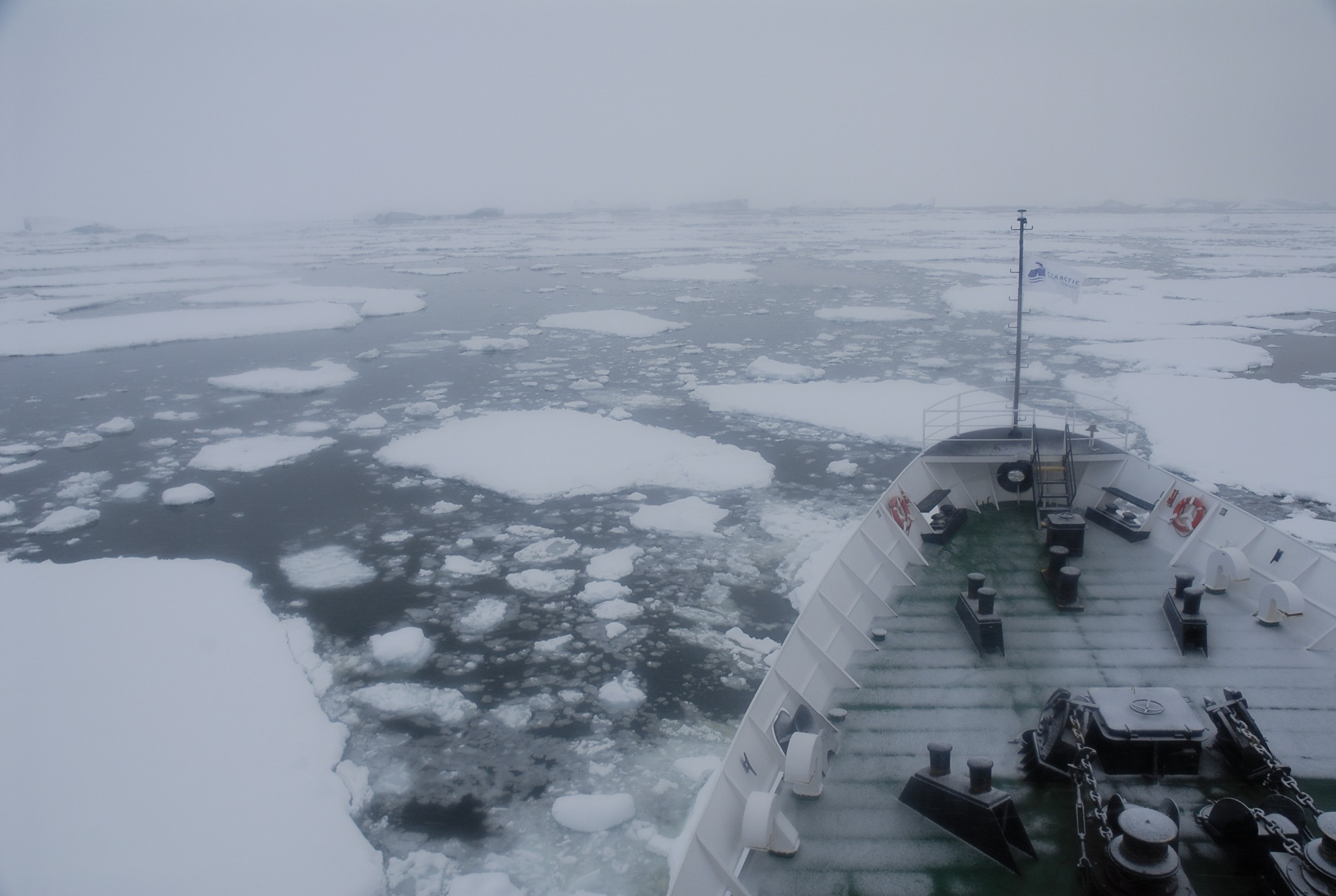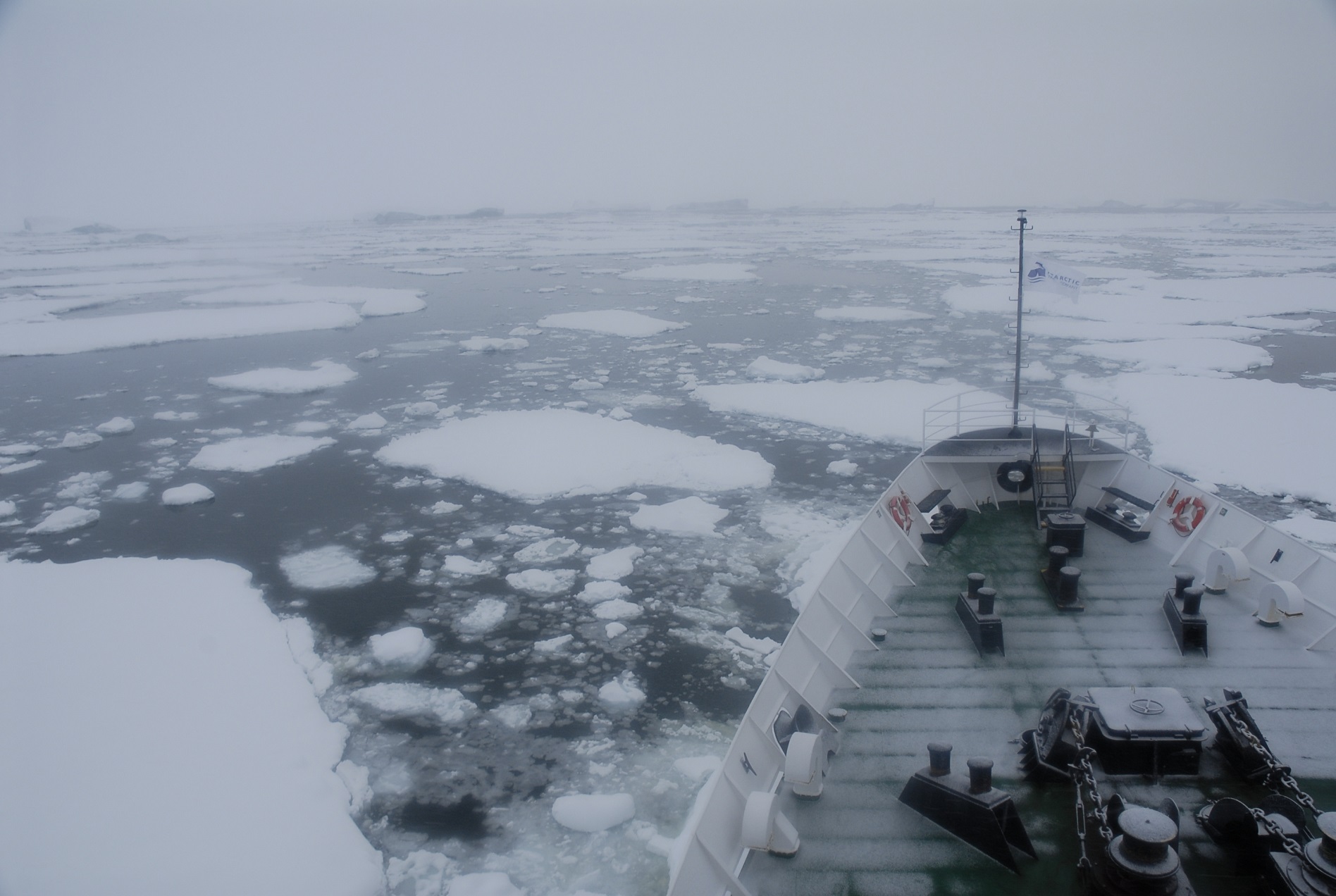
After a busy summer on the Antarctic ice, a number of IMAS, Antarctic Gateway Partnership (AGP), and ACE CRC staff and students have returned home to Tasmania. This is the fourth and final story in our series about their projects and experiences.
IMAS researchers have helped to provide a strong Tasmanian flavour to the development of the innovative Homeward Bound program, a unique approach to developing female leaders in science through integrated coursework and voyages to the Antarctic.
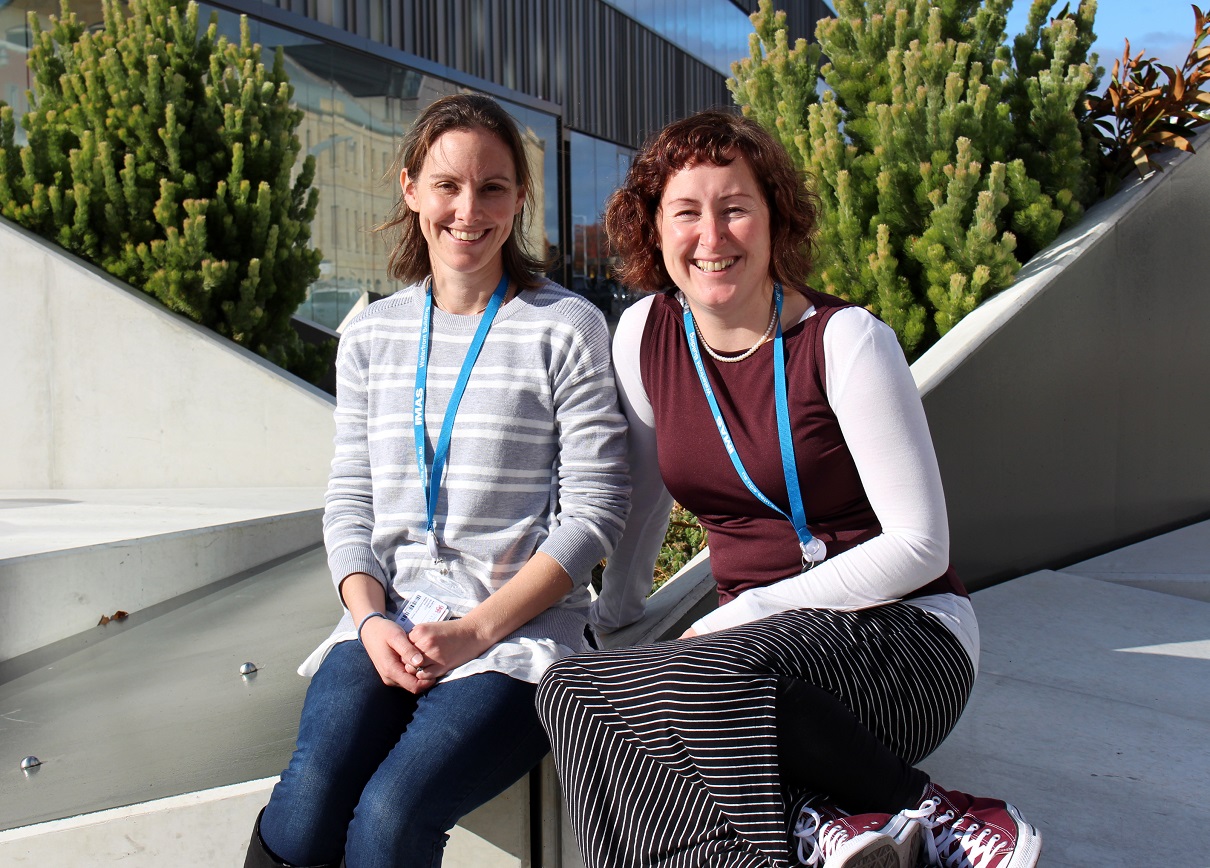 PhD student Nicole Hellessey and technical officer Molly Christensen were among the participants on the first voyage in December 2016, joining Associate Professor Mary-Anne Lea, who jointly leads the Homeward Bound science program.
PhD student Nicole Hellessey and technical officer Molly Christensen were among the participants on the first voyage in December 2016, joining Associate Professor Mary-Anne Lea, who jointly leads the Homeward Bound science program.
Homeward Bound was co-founded by Australian businesswoman Fabian Dattner and Australian Antarctic Division and ACE CRC scientist Dr Jess Melbourne-Thomas, while the Governor of Tasmania, Professor Kate Warner, is a Patron of the project.
This February two more IMAS scientists, Justine Barrett and Dr Karen Alexander (Pictured, left, Justine & Karen, l-r) joined Mary-Anne and 78 female scientists from around the world for the second Homeward Bound voyage.
Here, Justine and Karen share their stories as participants.
Justine
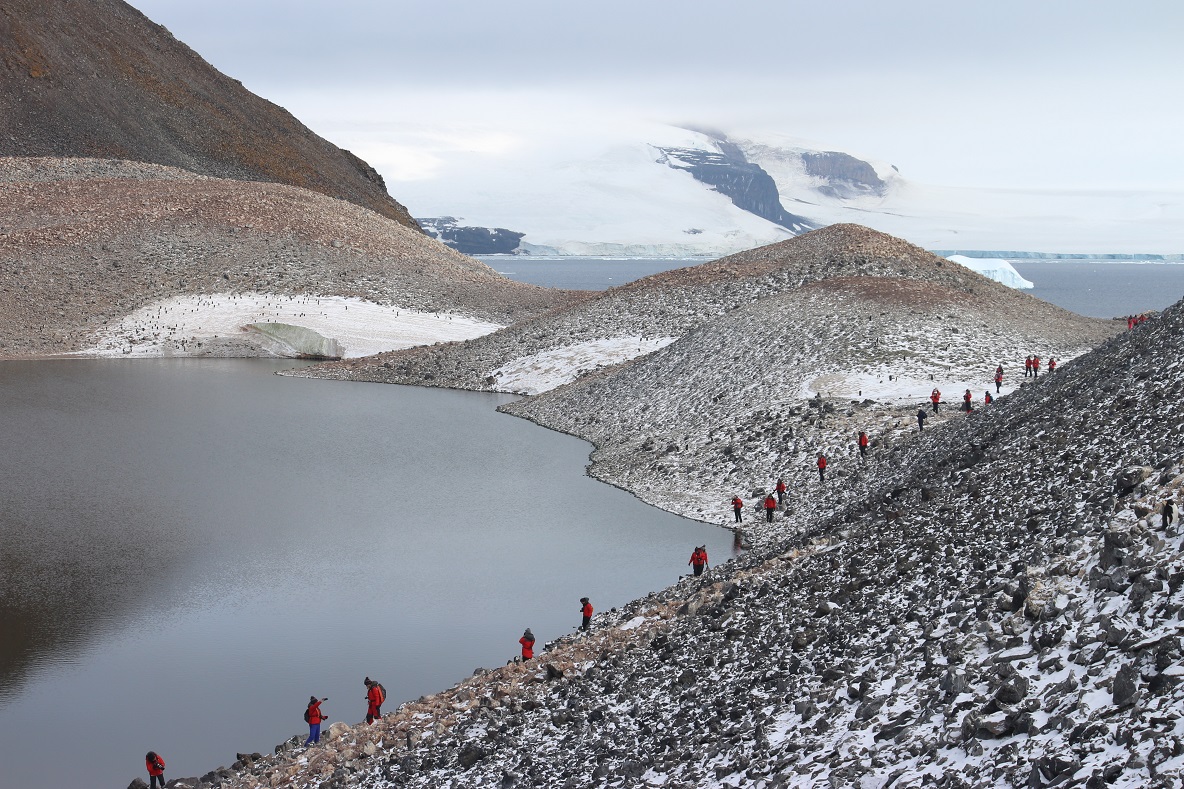 “Before the voyage started we had three days in Ushuaia, full of content and rich conversations.
“Before the voyage started we had three days in Ushuaia, full of content and rich conversations.
“As soon as you walked into the room with all these women it felt like you were in this big family. (Pictured, right, Homeward Bound team on Paulette Island. Credit: Justine Barrett)
“It was an incredible feeling that was really unexpected. You just get in this big room and feel like you’re home.
“Every day on the ship my mind was blown with rich conversations, with the content, with all these ideas, with the creative space we had, not to mention the scenery. It was an incredible experience and I got more out of it than I ever imagined I would.
“What you don’t see in photos of Antarctica is the feeling and the emotion that you experience when you’re there. There’s a lot of power in Antarctica - just staring out the window, it moves you. It’s exhausting having that scenery every single day! 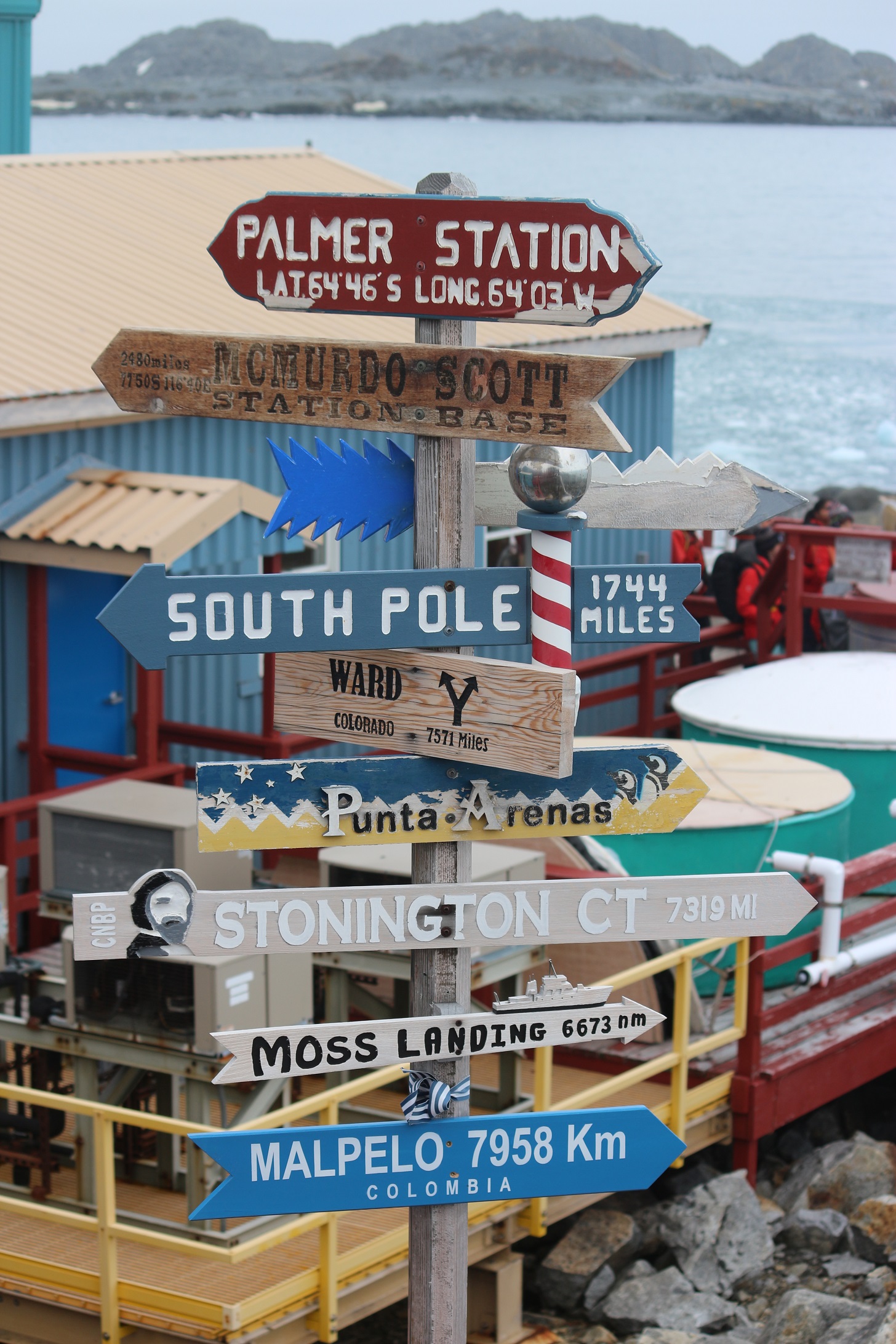
“But part of me questioned “should we really be here?” It looks so untouched, and then we steam through it on a ship.
“We saw krill fishing ships and lots tourist ships, and we went to bases. It felt like a real privilege to be there but at the same time I had this doubt about whether we should be there at all.
“Each morning by 9am we’d be either getting ready for a shore landing, maybe at a penguin colony or a research base, or doing course content. The rest of the time, even in our downtime, there were so many conversations and brainstorming ideas with each other. (Pictured, left, sign at Palmer Station. Credit: Justine Barrett)
“The way they did the training, it forced you to be mentally ‘present’. You could never just sit in the back of the classroom and have a day off.
“I don’t know yet how much it’s changed me. I’m surprised by how much I’m struggling to get back into the real world, and I think it’ll take a good six months for me to work out how I’ve changed.
“I had been worried that having a whole bunch of women who were really driven would be problematic. But it was really supportive. Everything seemed to flow. It was beautiful to experience.
“My mind was blown every day. I could have stayed in Antarctica forever if my family had been there, for sure. I could happily live there.”
Karen
“When people ask me what it was like, the stock answer is that it was a time of deep soul-searching, very intense leadership training, amazing connections with 78 incredible women, and all of this in an absolutely epic environment. (Images, below, Credit: Karen Alexander)
“That kind of says lots and says nothing at all at the same time. It’s so difficult to explain. It was a really, really intense period of 3 ½ weeks where so much happened and it was like a microcosm of society.
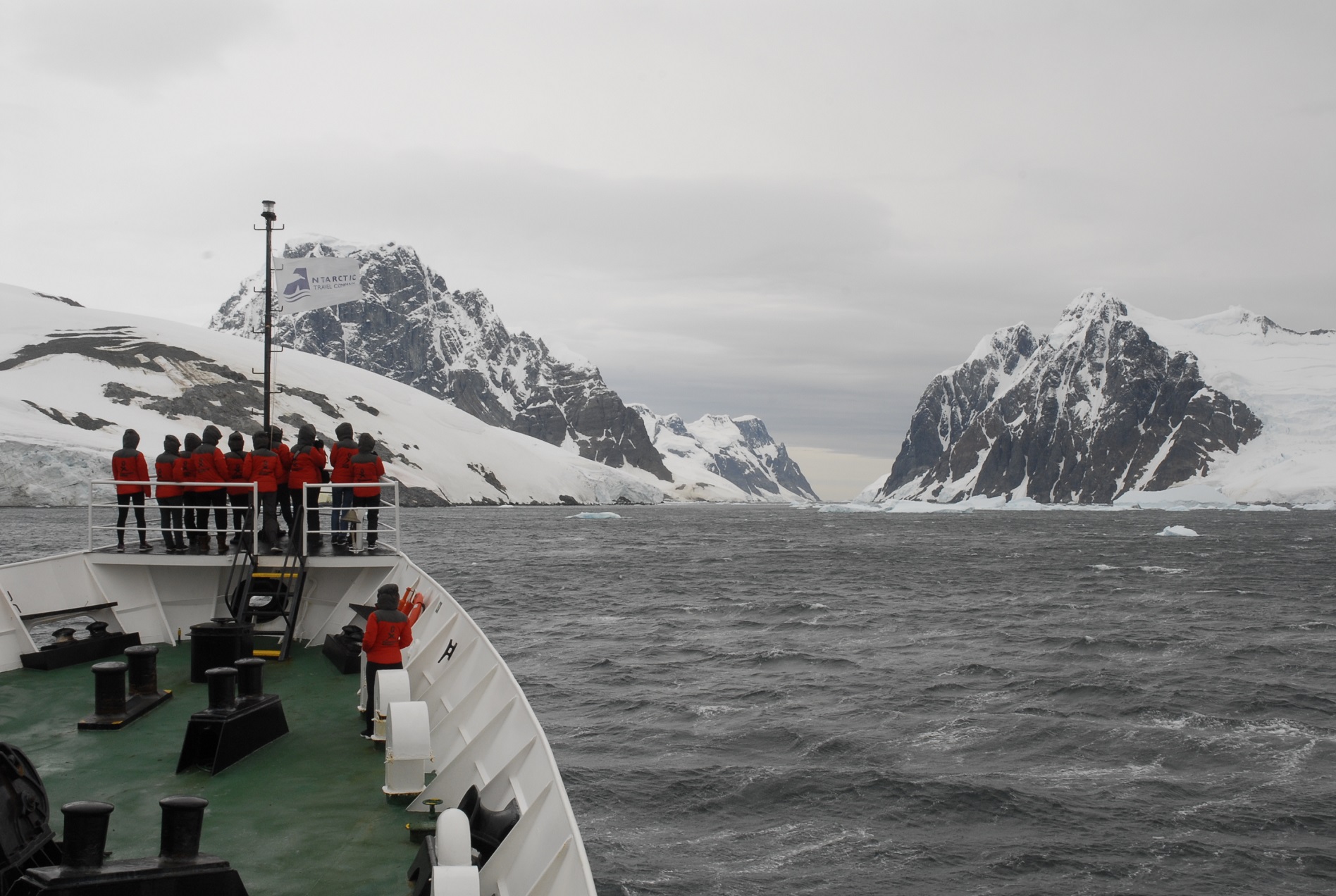 “All of the experiences you would have in normal life, in terms of decision-making, having to deal with conflict, learning and experiencing new things, all that happened in a very short time scale with a very small group of people, making all of the experiences more intense and also meaning you could learn a lot more from them.
“All of the experiences you would have in normal life, in terms of decision-making, having to deal with conflict, learning and experiencing new things, all that happened in a very short time scale with a very small group of people, making all of the experiences more intense and also meaning you could learn a lot more from them.
“It’s really interesting because when you get to the Antarctic you notice all the amazing things like icebergs, glaciers, mountains, penguins and whales - we even went out following killer whales one morning.
“And then, after a while, you get a bit more used to it and you begin to really notice the nuances a bit more. You notice how many shades of white, blue and grey there are in the world. I found that really focuses your mind.
“The program was hard work, a lot harder than I thought it was going to be. We worked ten to twelve hours a day, seven days a week, for three and a half weeks, so it was quite hard going.
“We had 4-5 hours program content per day, trips ashore, and time for reflection and group activities. Even when we weren’t working we were talking about work, or doing some sort of collaboration, like art projects.
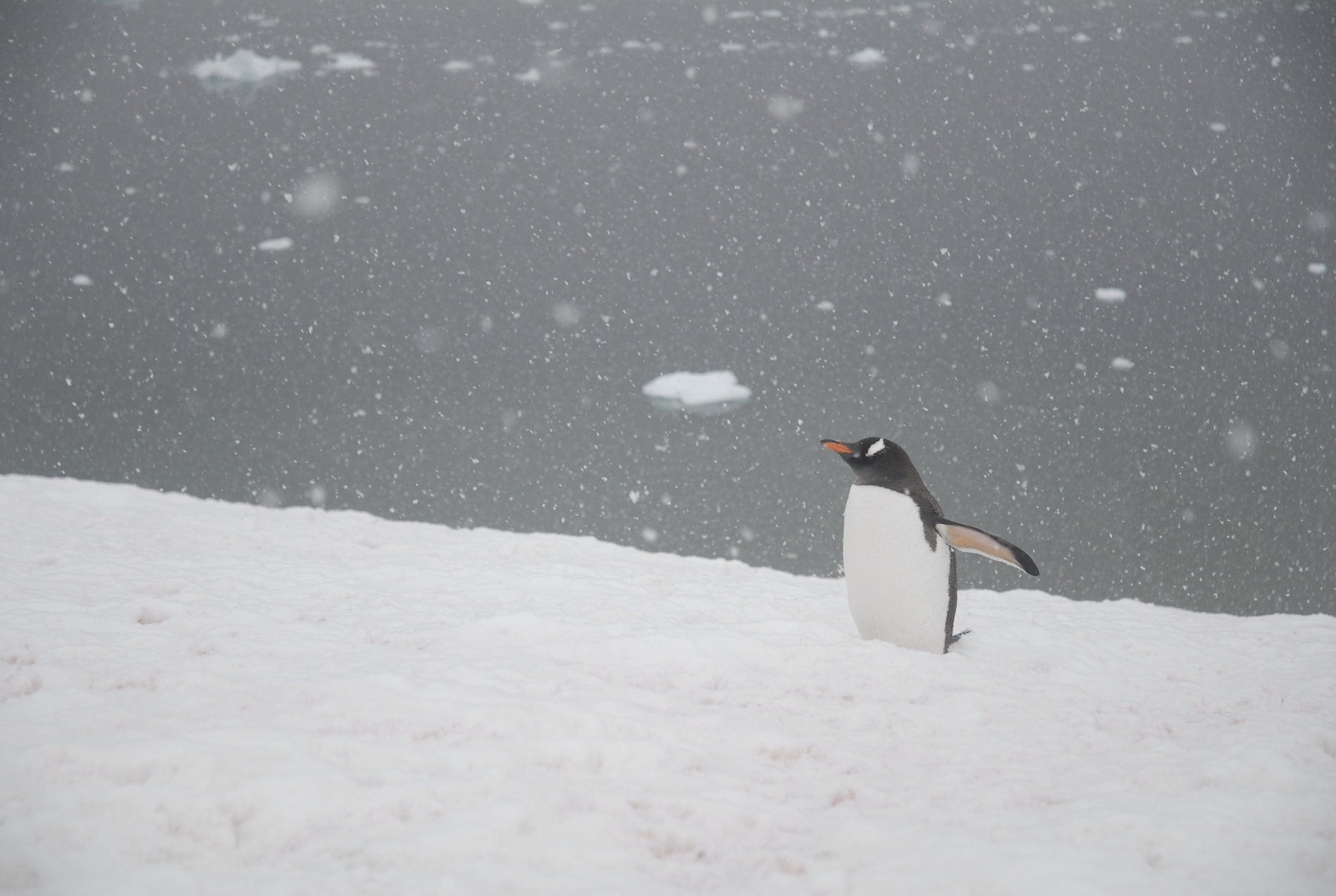 “We learnt everything from strategic mapping for how we wanted our lives to go through to peer coaching. We did a lot of work on visibility and science communication, we had a lot of other science projects on things like marine pollution, climate change and water quality.
“We learnt everything from strategic mapping for how we wanted our lives to go through to peer coaching. We did a lot of work on visibility and science communication, we had a lot of other science projects on things like marine pollution, climate change and water quality.
“We also had a three day World Café process on gender equity in STEM, which was a fantastic process and the part I was most involved in prior to going on the boat.
“It has changed me a lot, but how it’s changed me is more difficult to answer. It’s made me a lot more reflective. It’s made me consider a lot more how my actions are affecting other people. It’s made me think a lot more about what I say to people. It’s made me much more strategic.
“The voyage was 100% worthwhile. I would absolutely recommend it because there’s no other leadership program like this.
“We had 80 women from across the world with different cultures and different backgrounds. To be able to explore things in that group, you just don’t get that opportunity elsewhere.
“Now I have this amazing network. Every time I have a question or problem I can post a message on Facebook and get 10 answers within 5-minutes.
“Having that support network is probably one of the most amazing things I got out of it.”
